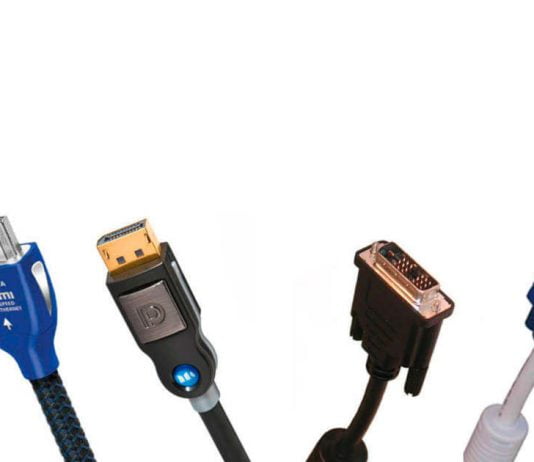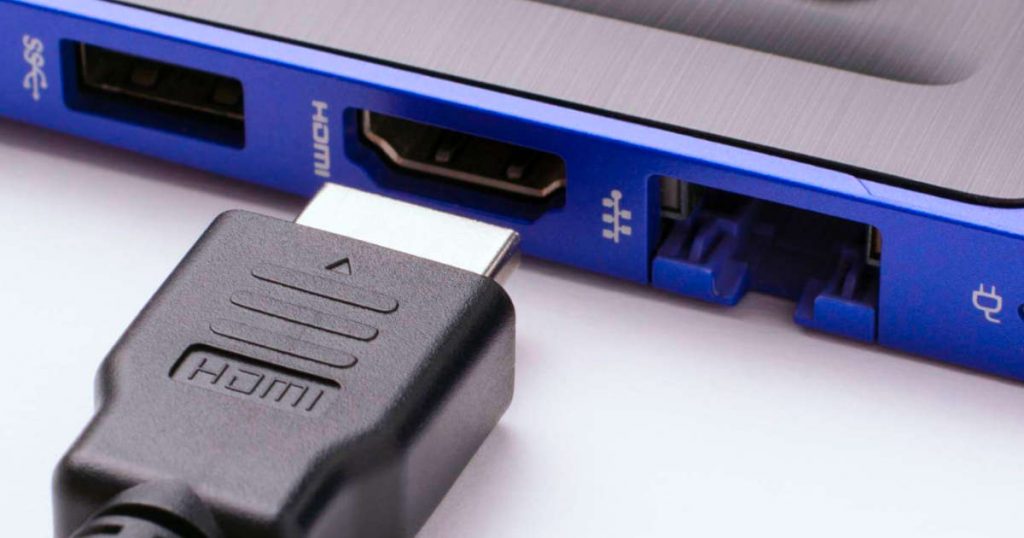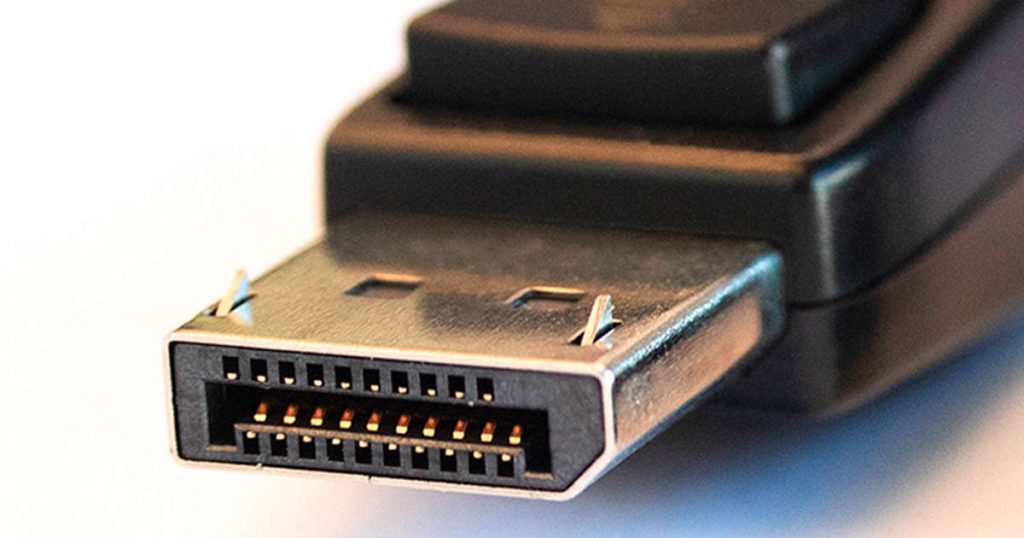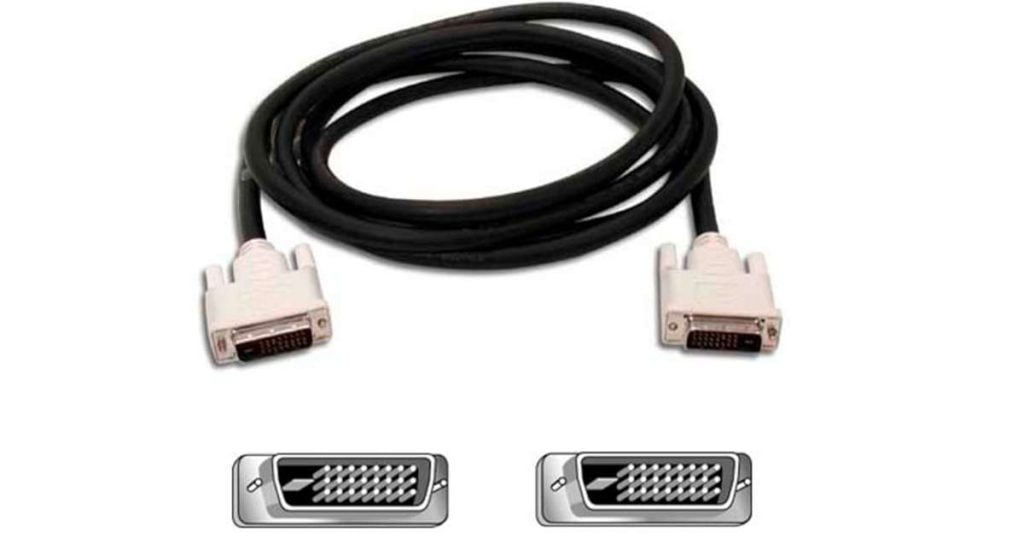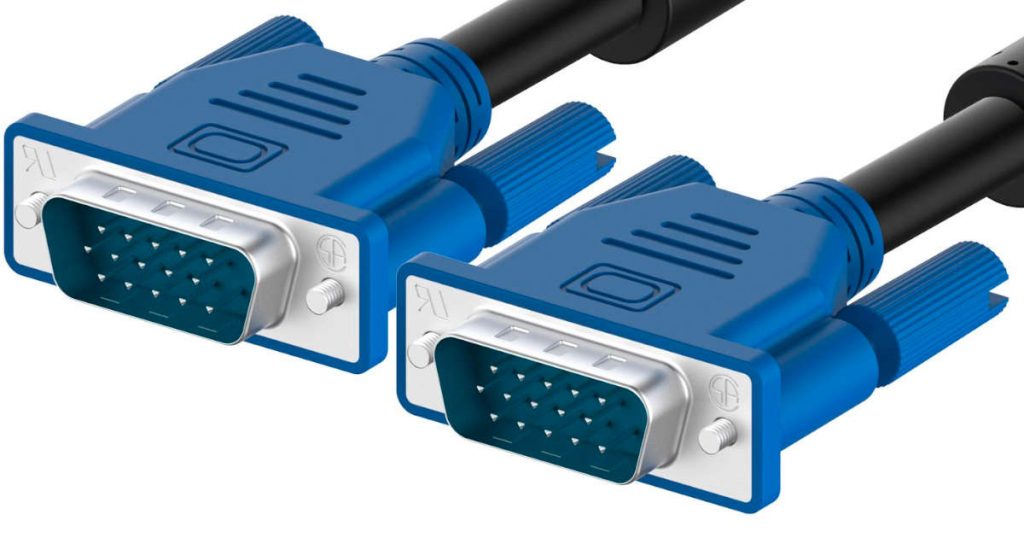If you just got a brand-new gaming monitor or TV and can’t figure out the various ports and connectors — HDMI, DisplayPort, DVI and VGA — in the back of the device. Then don’t worry, because in this article we will cover each of them, name all the differences, advantages and limitations.
After reading the post, you will understand which cables and ports you should and should not use. Furthermore, we will assist you with appropriately connecting the display in the least amount of time so that you may experience the highest visual quality as soon as possible.
Contents
HDMI vs DisplayPort vs DVI vs VGA
HDMI
The high-definition multimedia interface HDMI is the most versatile and common connector in most modern devices. It is available in all TVs, monitors and graphics cards — but not all are equally effective, as there are several specifications. The most popular versions are described below:
HDMI 1.4 is the most used non-4K display standard. It can provide screen resolution up to 2560×1600 at 75Hz as well as 144Hz at 1920×1080, which is very popular among competitive gamers.
HDMI 1.3 also supports 144Hz at 1080p, but older versions of HDMI (1.0 to 1.2) can have a maximum resolution of 1920×1200 at 60Hz.
Consequently, all modern displays have at least HDMI 1.4, which boasts support for multi-channel audio, can carry ethernet data, and deliver superior colour depth. In addition, there is compatibility with 4K, but only up to a frequency of 30 Hz. HDMI 1.4 does not allow ultra-wide video in 21:9 aspect ratios or stereoscopic 3D.
This is where HDMI 2.0 comes into play — the specification further increases the colour depth and adds smoothness at the expense of a frequency of 60 Hz. There is also support for the 21:9 aspect ratio and stereoscopic 3D. HDMI 2.0 supports 1440p at 144Hz and 1080p at 240Hz resolutions. Both versions, 1.4 and 2.0, support adaptive sync technology, i.e. FreeSync from AMD.
HDMI 2.0a supports HDR (high dynamic range), while HDMI 2.0b supports HDR10 enhanced format and HLG standard.
The release of the latest HDMI 2.1 specification so far took place in 2017. It added support for dynamic HDR, 4K resolution at 120Hz, and even 8K at 120Hz, which will come in handy if you get the PlayStation 5 and Xbox Series X consoles. Dynamic HDR and updated adaptive sync technology (FreeSync 2) work with standard cables, while for 4K and 8K at 120Hz, you need new 48G cables.
DisplayPort (DP)
DisplayPort, unlike HDMI, is present in current monitors and extremely infrequently in televisions. DisplayPort 1.2 is the current version required for gaming monitors with Nvidia G-Sync variable refresh rate technology. While AMD’s FreeSync supports HDMI and DP (v1.2a), Nvidia only requires a DisplayPort link.
DisplayPort 1.2 has an effective bandwidth of 17.28 Gbps in HBR2 (High Bit Rate 2) mode, supporting a wide colour gamut and high resolution (up to 4K) at 75Hz. Furthermore, DisplayPort allows transmitting multiple video streams through a daisy chain, i.e., DisplayPort-Out.
The less popular DisplayPort 1.3 version raises the bandwidth to 25.82 Gbps, sufficient for 4K at 120Hz, 5K at 60Hz, and 8K at 30Hz. Through MST (Multi-Stream Transport), you can daisy-chain up to two 4K UHD displays or four monitors with WQHD+ (2560×1600) resolution at 60Hz.
The latest version of DisplayPort 1.4 adds support for the HDR10 format and Rec2020 colour gamut, as well as 8K HDR at 60Hz and 4K HDR at 120Hz. The DSC (Display Stream Compression) traffic compression standard was used, with a compression ratio of 3:1.
Mini-DisplayPort (mDP) can be found on some Apple computers and laptops. The ports support resolutions up to 2560×1600 or 4096×2160, depending on the version of DisplayPort. You can also get mDP to VGA, DVI or HDMI adapters. The Apple Thunderbolt connector is backwards compatible with mDP and can be recognized by the small lightning bolt icon on the cable connector.
DVI (Digital Visual Interface)
DVI connections are on nearly all monitors, graphics cards, and desktop motherboards. DVI connections are divided into three types — DVI-A for analogue video, DVI-D for digital video, and DVI-I (built-in). Like VGA, Single-Link DVI is limited to 1920×1200 at 60Hz.
The major advantage of the DVI port is that it is widely available and adaptable, allowing you to convert it to VGA and HDMI using the proper adapters. This is especially beneficial if you need to attach an additional display to your computer and your video card or monitor only has a limited number of connections.
The Dual-Link DVI ports contain additional pins and can support resolutions up to 2560×1600 at 60Hz and 1920×1080 at 144Hz for gaming. While most DVI connectors cannot carry audio, some newer GPUs allow audio output via DVI. Compared to HDMI 1.4, the DVI port has a worse colour gamut and overall performance. So, if feasible, utilize HDMI rather than DVI.
VGA (Video Graphics Array)
VGA, often referred to as the “D-Sub” connector, carries an analogue video signal and is an old technology that should be avoided. Yes, VGA supports 1920×1200 at 60Hz without any problems, but if you have other options, it’s better to use a DVI-D or HDMI port.
In addition, because graphics adapters can no longer generate an analogue signal, you will require an adaptor to function with contemporary graphics cards.
The difference in image quality is almost unnoticeable, but other factors may cause some inconvenience, such as cable length, digital conversion, wire gauge, etc.
Conclusion
It is worth saying that, for example, a picture with a screen resolution of 1920 × 1080 and a frequency of 60 Hz will look the same regardless of how you connected your display — via DVI-D, DisplayPort or HDMI. Thus, the conclusion is that the image will not get better even if you use better and more expensive cables (except for VGA).
Our advice is to use the cables that came with your graphics card or display, and before purchasing a new cable or adapter, make sure both devices support the resolution/refresh rate you want.


